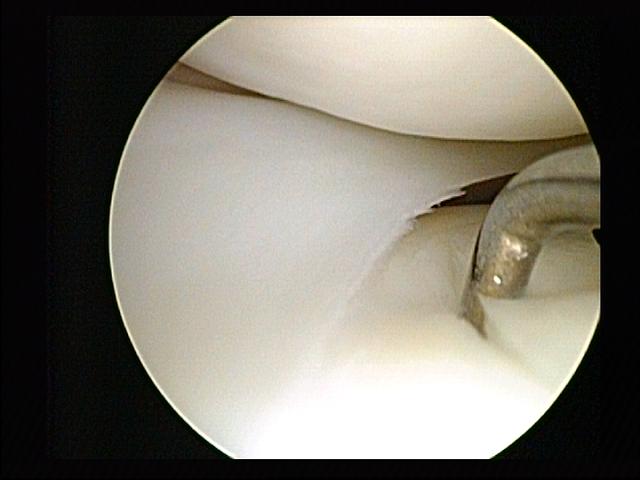Arthroscopy is a procedure that may be recommended to diagnose and treat problems inside a joint. It is performed most commonly on the knee joint.
An arthroscope is a pencil-sized instruments that contains a small magnfifying lens and bright light to illuminate the structures inside the joint. During an arthroscopic examination, an orthopaedic surgeon makes a small incision in the patient's skin and then inserts the arthroscope into the joint space
When Is Arthroscopy Recommended?
Diagnosing joint injuries and disease requires a detailed musculoskeletal system. Additional tests, such as an MRI or CT scan may be recommended.
If the cause of joint pain or disease cannot be determined, arthroscopy may be recommended to get a close look at the tissues within the joint and visualize any signs of inflammation, tears or other anatomic changes.
Arthroscopy may also be recommended to repair any damage. For instance, loose pieces of cartilage may be removed to create a smoother joint surface.
What Are the Advantages of Arthroscopy?
Arthroscropy is an alternative to "open" surgery that requires a larger incision and more trauma to the joint. Open surgery also requires much more time to recover.
Arthroscopy provides a clear view inside of the joint and enables a variety of procedures to be performed with specialized instruments. Procedures that once required open surgery can now be performed with arthroscopy while achieving the same outcomes. In addtion, arthroscopy can be performed as an outpatient (in a clinic setting rather than a hospital) with the patient going home the same day.
What Kind of Anesthesia May Be Used?
Some arthroscopic procedures are performed using regional anesthesia that numbs only the joint or extremity that is being evaluated. General anesthetic may be preferred in some cases. A surgeon and anesthesiologist will work with you prior to surgery to determine the best solution.
What Are Potential Complications of Arthroscopic Surgery?
Complications during or after most arthroscopic surgeries are rare, however, every surgery has risks. The complications which can occur during or following an arthroscopic procedure include:
- Blood clots Infection
- Joint stiffness
- Damage to nerves or blood vessels
What Can Be Expected Following Surgery?
Healing is different from patient to patient and from procedure to procedure. Even though the incisions are small, a surgeon may have done a large amount of work inside the joint.
This can include tendon repair and reconstruction or joint articular cartilage surgery. The procedure performed will dictate a rehabilitation schedule much more than the size of the incisions.
Every person is different, so be sure to ask the surgeon what to expect and when various activities are allowed post-operatively.
Source: Vivacare
Last updated : 12/1/2022